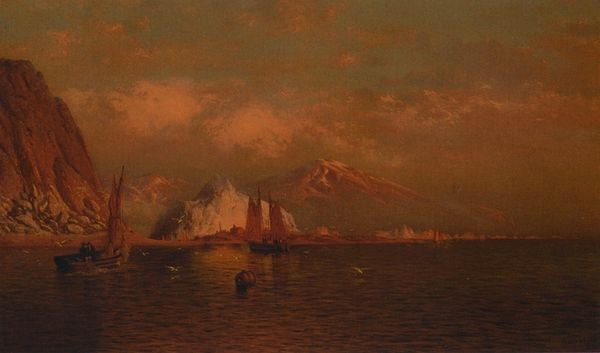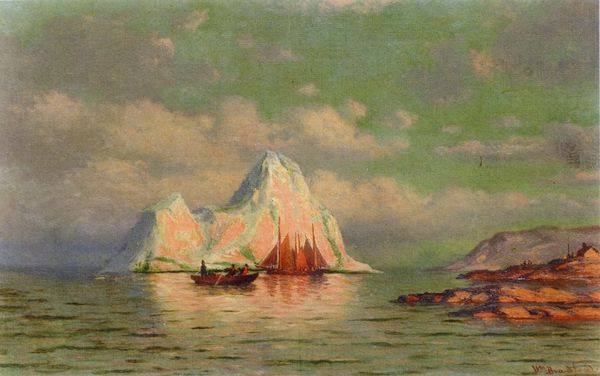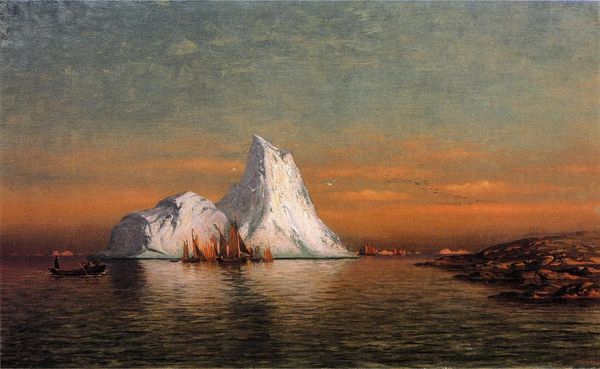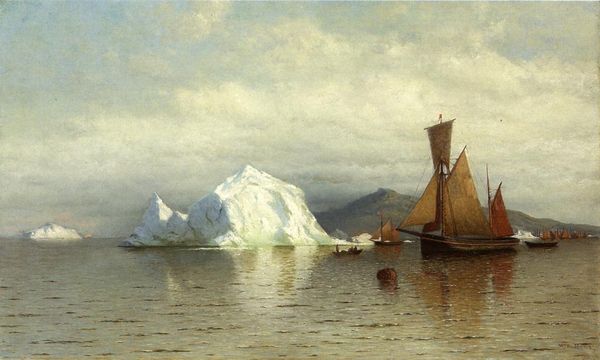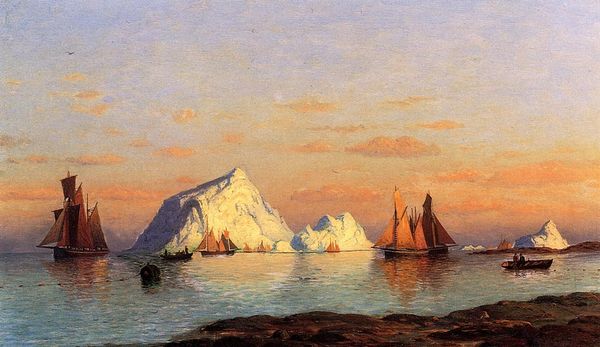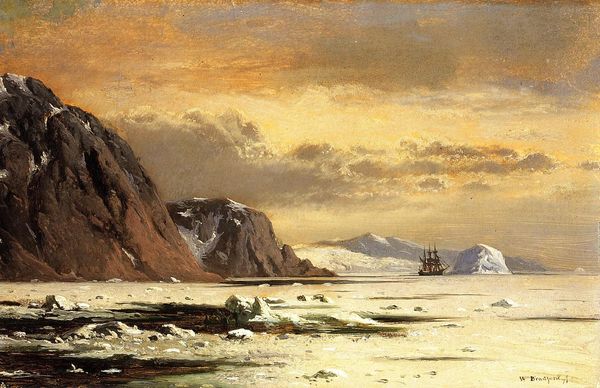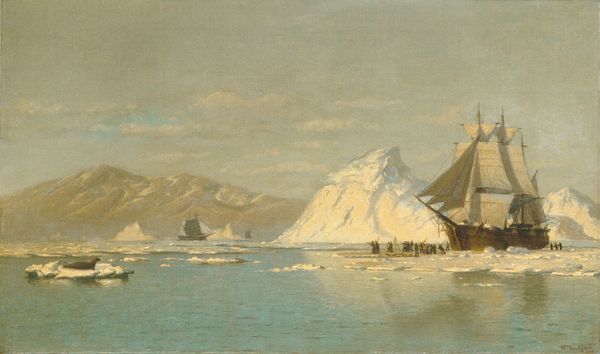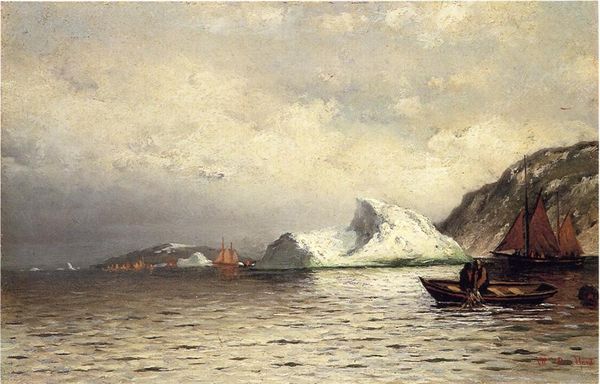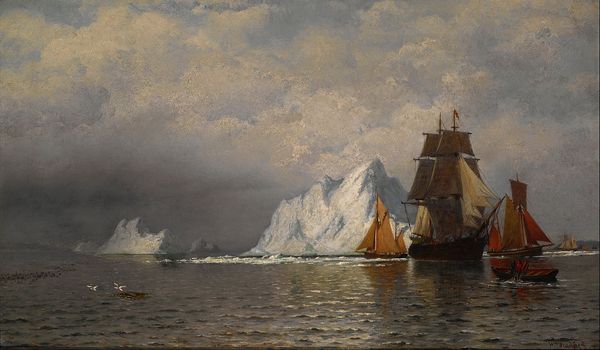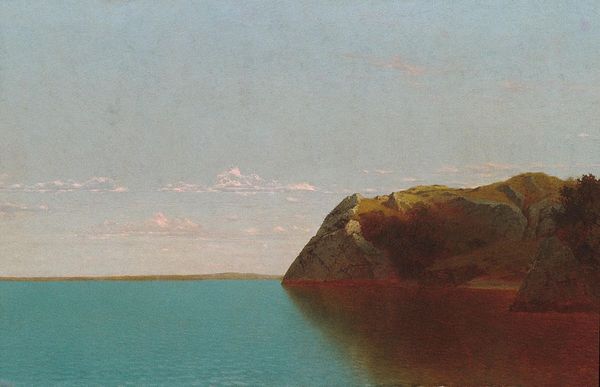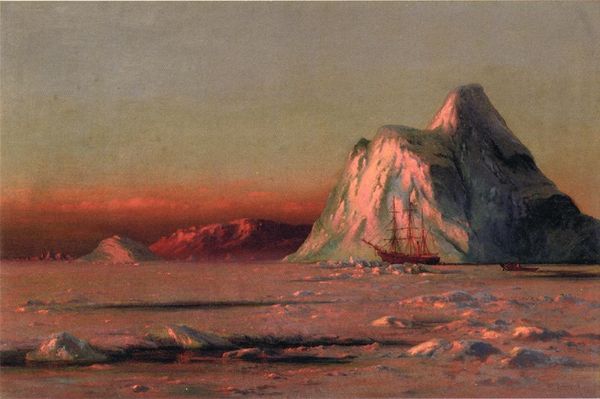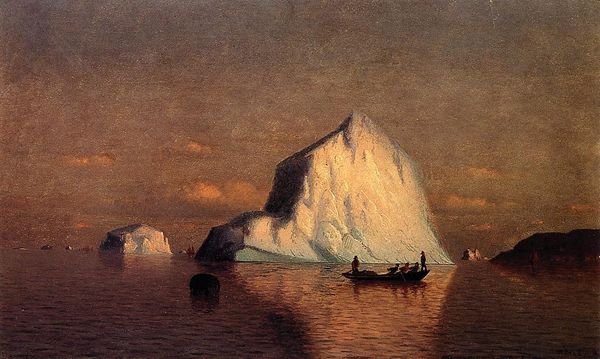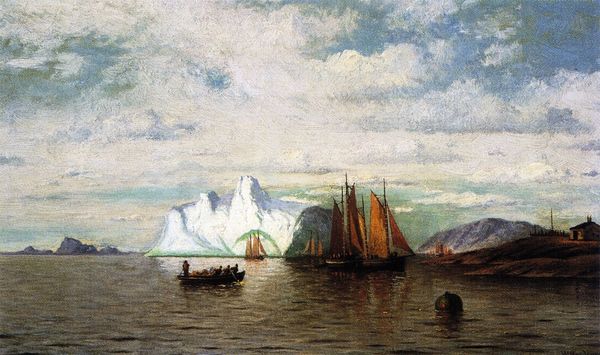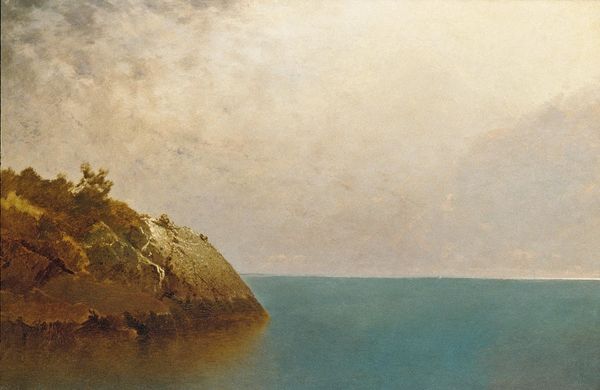
Copyright: Public domain
Curator: This is William Bradford’s "The Ice Blockade on the Labrador Coast," painted in 1871 using oil paint. Doesn’t it evoke a particular sense of serenity? Editor: It's a painting of silence, almost a visual hum. The light bathing the ice and water feels almost holy, but then you notice the ships—small against the monumental landscape. Curator: Bradford, a Quaker artist, made numerous trips to the Arctic. He was fascinated by the light, the scale, the drama. He was driven by both scientific curiosity and artistic yearning. His goal was to reproduce this almost primordial landscape. Editor: I'm intrigued by how the artist manages to show this stark environment by use of industrial means: mass-produced oil paint, canvas. It feels inherently contradictory, given the isolation Bradford tries to depict. What was the process like for Bradford, working en plein air in such an extreme location? And how did those working conditions affect the resulting work? Curator: The process must have been grueling. I feel the artist’s own struggle is visible here in the rendering of light on ice – as if the canvas itself carries echoes of the cold, wind and remoteness of the experience. What materials did he employ for capturing these fleeting moments in nature, do we know exactly? Editor: Beyond brushes and canvas, it is worth exploring how his choice of oil paint—which allowed for layers, for blending, and slow drying—allowed Bradford to achieve that atmospheric perspective and luminescent glow we see on the icebergs. Also to consider the accessibility of painting as a medium that, thanks to industrial innovations, created new professional paths for the artists of the time. Curator: A beautifully painted piece, really capturing that transient, otherworldly feel, like nature holding its breath before releasing an immense roar. And you are right, the painting techniques reflect new ways of living that defined 19th-century art and culture. Editor: So, the tension between untouched landscape and industry isn’t just a contradiction, but the heart of the artwork itself, echoing changes in landscape art and accessibility.
Comments
No comments
Be the first to comment and join the conversation on the ultimate creative platform.
